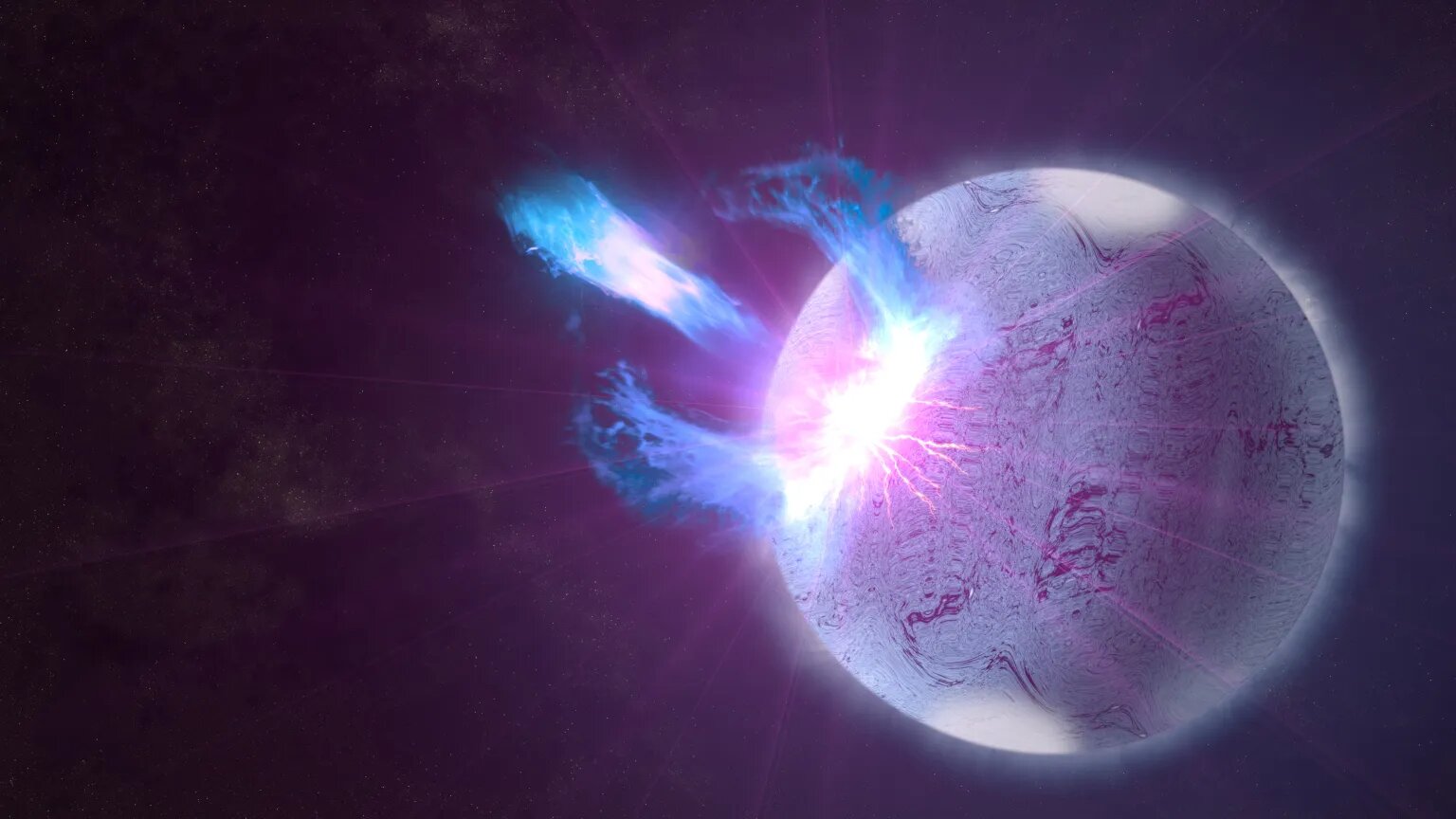Mysterious radiation bursts could be coming from 'starquakes' on neutron stars
If fast radio bursts that bombard Earth are linked to starquakes, they could help scientists better understand earthquakes on our planet.

Mysterious and rapid blasts of radiation that sweep over Earth could be the result of starquakes on "dead stars," or neutron stars. This connection could help scientists better understand earthquakes here on our planet.
First discovered in 2007, Fast Radio Bursts (FRBs) are invisible to human eyes but can be spotted by radio telescopes. They approach Earth from extragalactic sources, travel across billions of light-years, and are so powerful they can outshine the entire galaxy from which they emerge.
Yet despite this incredible power (and the fact that as many as 10,000 FRBs could occur in the sky over Earth every day) the source of FRBs remains unknown, partially because they often last just a thousandth of a second.
FRBs are divided into two broad categories. Some FRBs repeat and others do not, the latter of which account for the vast majority of these radio wave outbursts. A clue in the mysterious FRB origin story involves the fact that the energy distribution of those repeating FRBs is similar to what we see with earthquakes. New research conducted by the University of Tokyo strengthened these similarities, suggesting that FRBs may be caused by "starquakes" on the surface of neutron stars.
Related: Pulsar surprises astronomers with record-breaking gamma-rays
What is shaking on neutron stars?
Neutron stars certainly match the extreme nature of FRBs. They're born when massive stars exhaust their fuel supply used for their intrinsic nuclear fusion processes and thereby fling away their outer layers in end-of-life supernova explosions. This leaves behind a stellar core with a mass between one and two times that of the sun, which collapses to a width of around 12 miles (20 kilometers) .
This rapid collapse has three major effects.
Get the Space.com Newsletter
Breaking space news, the latest updates on rocket launches, skywatching events and more!
First, it creates matter so dense that a single sugar cube of it would weigh around 1 billion tons if it could be brought to Earth. Second, it increases the spin of neutron stars akin to an ice skater drawing in their arms while spinning to speed up. That allows some of these stellar remnants to rotate as fast as 700 times per second. And finally, the collapse "squashes" together magnetic field lines of the progenitor star, amplifying its strength and creating some of the most powerful magnetic fields in the known universe.
Young neutron stars with exceptionally strong magnetic fields are called magnetars and have previously been connected with the emission of FRBs.
Starquakes are theorized to happen when the surface of a neutron star experiences a sudden shift, similar to an earthquake here on Earth. One potential cause has been suggested to be stress formed through the twisting of those exceptionally strong magnetic fields.
"It was theoretically considered that the surface of a magnetar could be experiencing a starquake, an energy release similar to earthquakes on Earth," team member and the Department of Astronomy at the Graduate School of Science researcher Tomonori Totani said in a statement. "Recent observational advances have led to the detection of thousands more FRBs, so we took the opportunity to compare the now large statistical data sets available for FRBs with data from earthquakes and solar flares to explore possible similarities."
The team looked at the timing and emission energies of around 7,000 repeating FRB bursts, applying the same method employed to examine the time-energy correlation of both earthquakes and solar flares. This showed a remarkable correlation between FRBs and earthquakes, but not FRBs and solar flares.
The team discovered there were four major similarities between FRBs and earthquakes, according to Totani. Firstly, the probability of an aftershock occurring for a single FRB and earthquake appears to be between 10% to 50%. Secondly, the rate at which the aftershocks happen seems to decrease with time, as a power of time. Next, the researcher added, the aftershock rate is always constant even if the average rate of FRB-earthquake activity changes significantly. Finally, the team found no correlation between the energies of the main shock of both events and that event’s aftershock.
This all indicated to the team that neutron stars have a solid crust, and that when starquakes occur across them, they release huge amounts of energy, which we see as FRBs. To fully confirm this, the team intends to continue analyzing new FRB data as it comes in.
"By studying starquakes on distant ultradense stars, which are completely different environments from Earth, we may gain new insights into earthquakes," said Totani. "The interior of a neutron star is the densest place in the universe, comparable to that of the interior of an atomic nucleus. Starquakes in neutron stars have opened up the possibility of gaining new insights into very high-density matter and the fundamental laws of nuclear physics."
The team’s research was published this month in the journal Monthly Notices of the Royal Astronomical Society.
Join our Space Forums to keep talking space on the latest missions, night sky and more! And if you have a news tip, correction or comment, let us know at: community@space.com.

Robert Lea is a science journalist in the U.K. whose articles have been published in Physics World, New Scientist, Astronomy Magazine, All About Space, Newsweek and ZME Science. He also writes about science communication for Elsevier and the European Journal of Physics. Rob holds a bachelor of science degree in physics and astronomy from the U.K.’s Open University. Follow him on Twitter @sciencef1rst.









